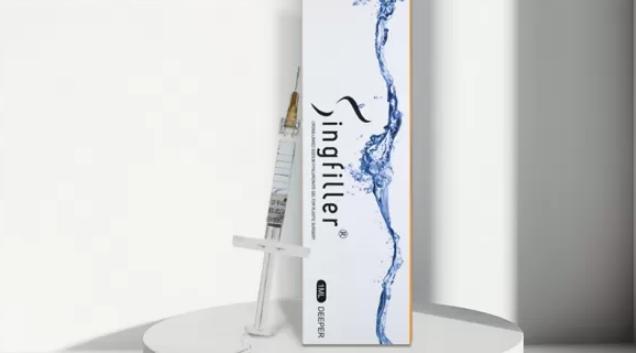Dermal fillers have become a popular and versatile solution in the field of aesthetic medicine, offering individuals a non-surgical option for facial rejuvenation. These injectable substances are designed to address a variety of concerns, from fine lines and wrinkles to loss of volume and sagging skin. Understanding what dermal fillers are made of is crucial for both practitioners and patients considering these procedures.
Hyaluronic acid is one of the most common and widely used ingredients in dermal fillers. It is a naturally occurring substance in the body, found in the skin, eyes, and connective tissues. HA fillers work by attracting and retaining water, thereby adding volume to the treated area. This leads to a plumping effect, reducing the appearance of wrinkles and enhancing facial contours. Popular brand names utilizing hyaluronic acid include Juvederm and Restylane.
Calcium hydroxylapatite is another type of dermal filler. It is a mineral-like compound found in human bones. When used in fillers, it is suspended in a gel-like solution. CaHA stimulates the production of collagen, a protein that provides structure to the skin. This dual action of immediate volume enhancement and collagen stimulation contributes to longer-lasting results. Radiesse is a well-known brand utilizing calcium hydroxylapatite.
Poly-L-lactic acid is a synthetic substance that, when injected, stimulates the body's collagen production. Unlike hyaluronic acid, PLLA works gradually over time, resulting in a subtle and natural-looking improvement. This type of filler is often chosen for treating volume loss in larger areas. Sculptra is a popular brand using poly-L-lactic acid.
Polymethyl methacrylate is a synthetic, biocompatible material that has been used in medicine for decades. In dermal fillers, PMMA is suspended in a collagen gel. The microspheres in PMMA fillers remain in place and create a support structure, adding lasting volume. Bellafill is a notable example of a dermal filler containing PMMA.
Some dermal fillers use a person's own fat, harvested from one area of the body (often through liposuction), to inject into another area. This is a natural and biocompatible option, as it uses the patient's own tissue. While it provides effective volume restoration, the longevity of results may vary.

Hyaluronic acid, a carbohydrate molecule naturally present in the body, plays a key role in maintaining skin hydration and volume. In dermal fillers, the hyaluronic acid is synthesized through a fermentation process, creating a sterile and biocompatible gel. The gel is then cross-linked, meaning the individual chains of hyaluronic acid are chemically bonded to one another. Cross-linking enhances the stability and longevity of the filler.
The cross-linked hyaluronic acid gel is carefully formulated to achieve specific characteristics, such as viscosity and cohesiveness. These factors determine how the filler will behave once injected into the skin. For example, a more cohesive filler may be suitable for deeper wrinkles or areas requiring structural support, while a less cohesive filler might be chosen for fine lines or more superficial applications.
Dermal fillers have a well-established safety profile when administered by trained and qualified practitioners. Since many fillers use substances naturally found in the body or biocompatible materials, the risk of allergic reactions is minimal. However, it's essential to note that all medical procedures carry some level of risk, and patients should thoroughly discuss their medical history and expectations with their practitioners before undergoing any treatment.
The longevity of dermal fillers varies depending on the type of filler used. Hyaluronic acid fillers typically provide results that last anywhere from six months to two years, depending on the specific product and the area treated. Calcium hydroxylapatite and poly-L-lactic acid fillers may offer results that last longer, with effects potentially lasting up to two years or more. Autologous fat injections, while subject to natural absorption, can provide long-lasting results as the transferred fat establishes a blood supply in the new location.
Dermal fillers, with their diverse compositions and applications, have revolutionized the field of aesthetic medicine. Whether utilizing hyaluronic acid for immediate plumping, calcium hydroxylapatite for collagen stimulation, or other materials for specific purposes, these fillers offer a customizable approach to facial rejuvenation. Understanding the composition of dermal fillers is crucial for both practitioners and patients, facilitating informed decision-making and ensuring safe and effective outcomes in the pursuit of a more youthful and refreshed appearance.
 Call us on:
Call us on:  Email Us:
Email Us:  No. 125(E), 10th Street, Hangzhou Qiantang Area, Zhejiang, China
No. 125(E), 10th Street, Hangzhou Qiantang Area, Zhejiang, China